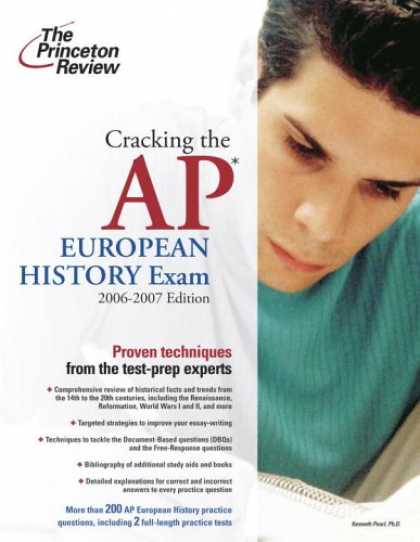This was cross-posted on the FBomb.
I don’t like being patronized. I know this is probably not a shocking fact, but I would like to make it extremely clear that I HATE being patronized. (For those of you who would like a definition, to patronize someone is to behave in an offensively condescending manner towards him or her.) It also annoys me to no end when people patronize womankind.
This year I’m taking AP European History. Ignoring the fact that the teacher is honestly the worst I’ve ever had (although it is rather fun piping in with my obnoxious feminist comments), I find the course itself…well…rather patronizing towards women. Maybe I’m overreacting and being too picky, but nevertheless it annoys me that there are specific “women in xxx” units.
On a handout my teacher gave us outlining women’s role throughout the periods we’ve learned, it says at the top, “A generation ago, women’s history, if it appeared at all in the textbooks, was generally relegated to a few sidebars. Now, women’s history should be an integral part of your AP European History course.” The sentiment is noble: I completely support it and am glad that AP is making such a concerted effort to include women’s history in the curriculum. However, I find it kinda patronizing and a little bit sexist that they completely separate women’s history from the “mainstream” history.
I’ve taken notes in Goldhar format ever since my school had Rabbi Goldhar, the creator of the format, come in and teach it to us. It’s really helpful, since instead of taking notes in paragraph or even list format, it’s putting the main idea into a bubble on the left side of the page, and writing information pertaining to the main idea in spokes coming out from the bubble. Looking through my Goldhar notes for AP Euro, everything is in neat little bubbles. Under the Scientific Revolution, I have 16 bubbles, one of which is the “Women in Science” bubble. Under the Enlightenment there are 19 bubbles, one of which is the “Role of Women” bubble. Under the French Revolution, I have 29 bubbles and - you guessed it - “Women vs. Men in Philosophy,” “Women March Versailles,” and “Women in the Revolution” bubbles.
I find it kinda sad that not only was the pathetically small amount of information taught about women in those respective periods, but that said information was taught in a singular unit, grouped together simply because the people involved were women.
Let’s use the Scientific Revolution as an example. I have bubbles dedicated to Francis Bacon, Rene Descartes, Copernicus, Tycho Brahe, Johannes Kepler, Galileo Galilei, Isaac Newton, Thomas Hobbes, and John Locke. “Women in Science” has a lot of spokes, including ones dedicated to Margaret Cavendish, Maria Cunitz, Maria Winkelman, and Emile Chatelet. Why couldn’t the discoveries of Winkelman been mentioned under the same heading as those of Copernicus, since both of them tried to figure out an accurate calendar? Why don’t Newton and Chatelet get accorded honors at the same time, since Chatelet translated Newton’s work into French? I’m not saying to make a bigger deal out of their scientific research than they deserve, but just don’t separate the women’s work from the men’s work simply based on gender.
So that’s my two cents on how to include women’s history in the curriculum. It’s definitely a step in the right direction to include them in a separate unit, and I commend the AP for making such a concerted effort to keep women in the syllabus. Nonetheless, it’s much closer to the goal of complete equality between the sexes to include women in the mainstream program of study.

No comments:
Post a Comment